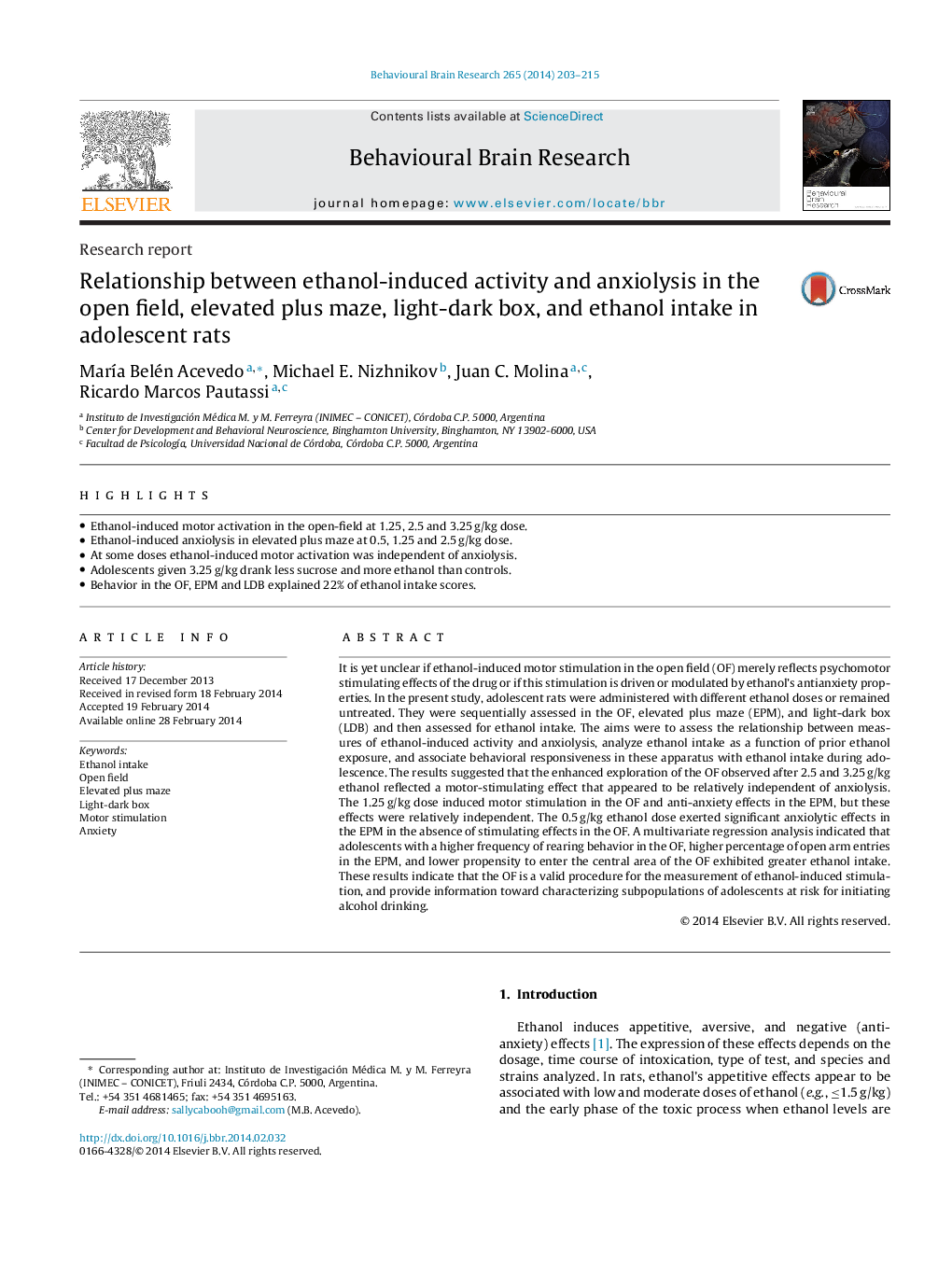| Article ID | Journal | Published Year | Pages | File Type |
|---|---|---|---|---|
| 6258316 | Behavioural Brain Research | 2014 | 13 Pages |
â¢Ethanol-induced motor activation in the open-field at 1.25, 2.5 and 3.25 g/kg dose.â¢Ethanol-induced anxiolysis in elevated plus maze at 0.5, 1.25 and 2.5 g/kg dose.â¢At some doses ethanol-induced motor activation was independent of anxiolysis.â¢Adolescents given 3.25 g/kg drank less sucrose and more ethanol than controls.â¢Behavior in the OF, EPM and LDB explained 22% of ethanol intake scores.
It is yet unclear if ethanol-induced motor stimulation in the open field (OF) merely reflects psychomotor stimulating effects of the drug or if this stimulation is driven or modulated by ethanol's antianxiety properties. In the present study, adolescent rats were administered with different ethanol doses or remained untreated. They were sequentially assessed in the OF, elevated plus maze (EPM), and light-dark box (LDB) and then assessed for ethanol intake. The aims were to assess the relationship between measures of ethanol-induced activity and anxiolysis, analyze ethanol intake as a function of prior ethanol exposure, and associate behavioral responsiveness in these apparatus with ethanol intake during adolescence. The results suggested that the enhanced exploration of the OF observed after 2.5 and 3.25Â g/kg ethanol reflected a motor-stimulating effect that appeared to be relatively independent of anxiolysis. The 1.25Â g/kg dose induced motor stimulation in the OF and anti-anxiety effects in the EPM, but these effects were relatively independent. The 0.5Â g/kg ethanol dose exerted significant anxiolytic effects in the EPM in the absence of stimulating effects in the OF. A multivariate regression analysis indicated that adolescents with a higher frequency of rearing behavior in the OF, higher percentage of open arm entries in the EPM, and lower propensity to enter the central area of the OF exhibited greater ethanol intake. These results indicate that the OF is a valid procedure for the measurement of ethanol-induced stimulation, and provide information toward characterizing subpopulations of adolescents at risk for initiating alcohol drinking.
